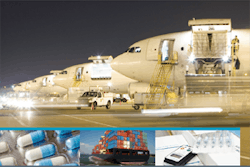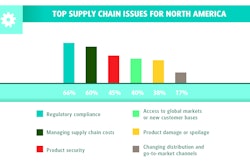
The EU’s new Guidelines on Good Distribution Practice [GDP] of Medicinal Products for Human Use, published March 7, 2012, were the topic of the Oct. 2 opening session of the 11th Annual Cold Chain GDP & Temperature Management Logistics Global Forum, held in Chicago Sept. 30 to Oct. 4. Leading the session, which promised to answer the question, “How Will it Impact Your Supply Chain?” was Riekert Bruinink, Group Chairman of the PIC/S GDP Working Group, Member of the EMEA GDP Drafting, and the Dutch Health Inspectorate.
“When we are talking about GDP, we are talking about the patient, and about the quality of the medicines that reach the patient,” Bruinink told attendees. “It is important that they can trust their medications.”
Bruinink explained that the EU guidelines were updated from the 1994 version to address a number of changes in the industry, including changes in distribution activities, resulting in more complex supply chains; the change from national to international distribution, resulting in greater temperature excursion risks; a lack of harmonization at the EU level; and the increased threat of counterfeit products. Regarding the last point, he said, “You can find counterfeit products everywhere in the world, and they are growing.”
The new EU GDP guidelines, with a six-month implementation period, are targeted at human medicinal products and Investigational Medicinal Products/veterinary products (in some countries). They are aimed at wholesalers and manufacturers, and deal with the supply chain on national, international, and global levels.
The body of Bruinink’s presentation comprised an outline of each of the 10 chapters of the new guidelines, with an emphasis on new and/or enhanced guidance within each section. Among the chapters with the most new information are:
• Chapter 1: Quality risk management (1.5.). “Now the risks are not the same for each company,” said Bruinink. Read the guidelines: “Quality risk management is a systematic process for the assessment, control, communication, and review of risks to the quality of medicinal products. It can be applied both proactively and retrospectively.”
• Chapter 2: Responsible Person (2.2.). According to the guidelines, “The wholesale distributor must designate a person as Responsible Person. The Responsible Person should meet the qualifications and all conditions provided for by the legislation of the Member State concerned. A degree in pharmacy is desirable. The Responsible Person should have appropriate competence and experience as well as knowledge of and training in GDP.”
• Chapter 3: Qualification and validation (3.3.2.), a totally new guidance within GDP, whereby “Wholesale distributors should identify what key equipment qualification and/or key process validation is necessary to ensure correct installation and operation.”
• Chapter 5: Storage (5.5), which says, “Medicinal products and, if necessary, healthcare products should be stored separately from other products likely to alter them and should be protected from the harmful effects of light, temperature, moisture, and other external factors. Particular attention should be paid to products requiring specific storage conditions.”
• Chapter 9: Transportation. This new chapter reads, “The required storage conditions for medicinal products should be maintained during transportation within the defined limits as described by the manufacturers or on the outer packaging.”
• Chapter 9: Temperature management transport for all temperature-sensitive products. These guidelines state that the wholesaler/manufacturer must use qualified temperature control systems, explained Bruinink. The three systems named are thermal packages, temperature-controlled containers, and temperature-controlled vehicles.

























